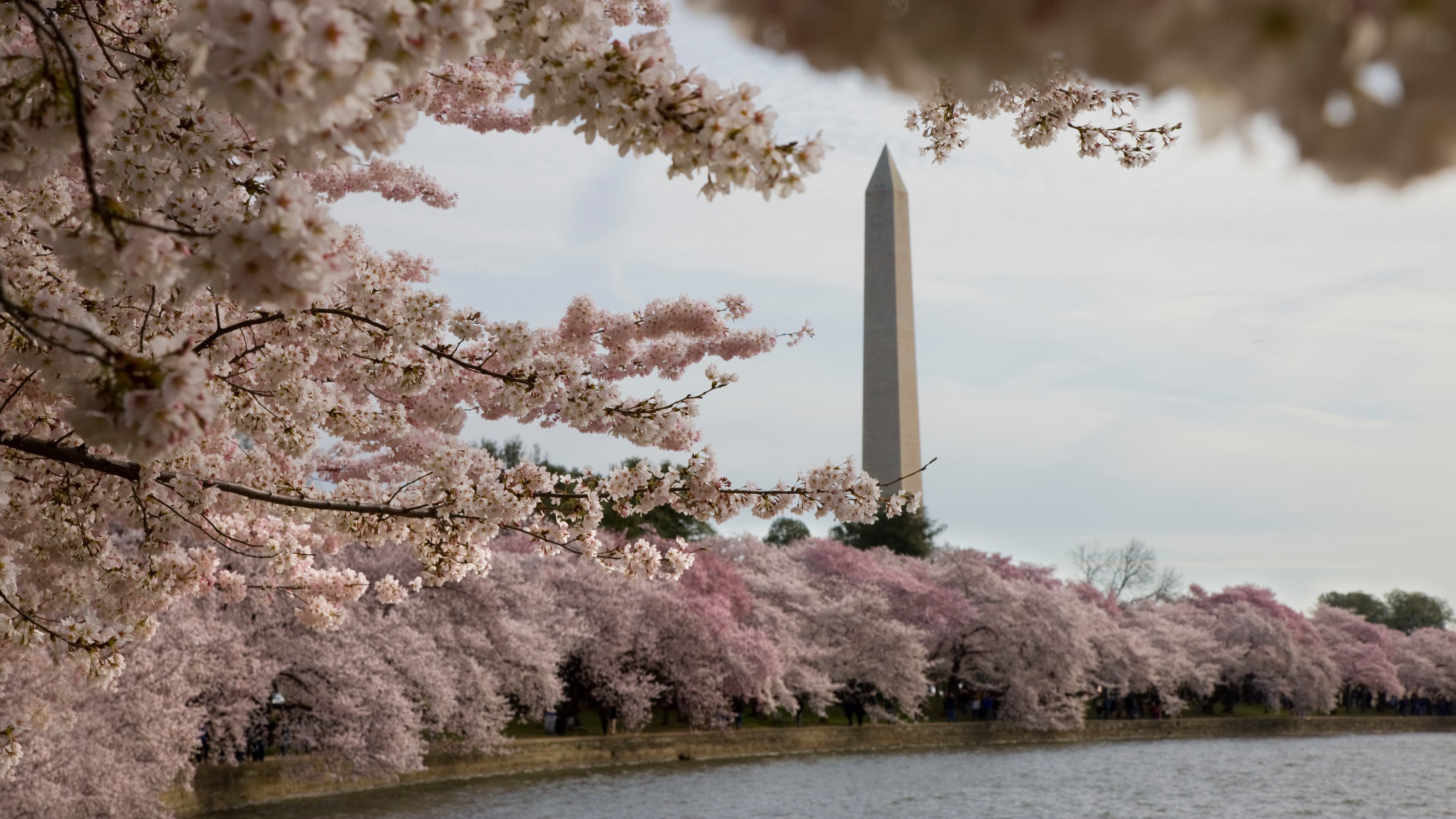March 27, 1912: In Washington, D.C., Helen Taft, wife of President William Taft, and the Viscountess Chinda, wife of the Japanese ambassador, plant two Yoshino cherry trees on the northern bank of the Potomac River, near the Jefferson Memorial. The event commemorated a gift, by the Japanese government, of some 3,020 cherry trees to the U.S. government.
The planting of Japanese cherry trees along the Potomac was first proposed by socialite Eliza Scidmore, who raised money for the endeavor. Helen Taft had lived in Japan while her husband was president of the Philippine Commission, and knowing the beauty of cherry blossoms she embraced Scidmore’s idea. After learning of the first lady’s interest, the Japanese consul in New York suggested making a gift of the trees to the U.S. government from the city of Tokyo.
In January 1910, 2,000 Japanese cherry trees arrived in Washington from Japan but had fallen prey to disease during the journey. In response, a private Japanese citizen donated the funds to transport a new batch of trees, and 3,020 specimens were taken from the famous collection on the bank of the Arakawa River in Adachi Ward, a suburb of Tokyo. In March 1912, the trees arrived in Washington, and on March 27 the first two trees were planted along the Potomac River’s Tidal Basin in a formal ceremony. The rest of the trees were then planted along the basin, in East Potomac Park, and on the White House grounds.
The blossoming trees proved immediately popular with visitors to Washington’s Mall area, and in 1934 city commissioners sponsored a three-day celebration of the late March blossoming of the trees, which grew into the annual Cherry Blossom Festival. After World War II, cuttings from Washington’s cherry trees were sent back to Japan to restore the Tokyo collection that was decimated by American bombing attacks during the war.
